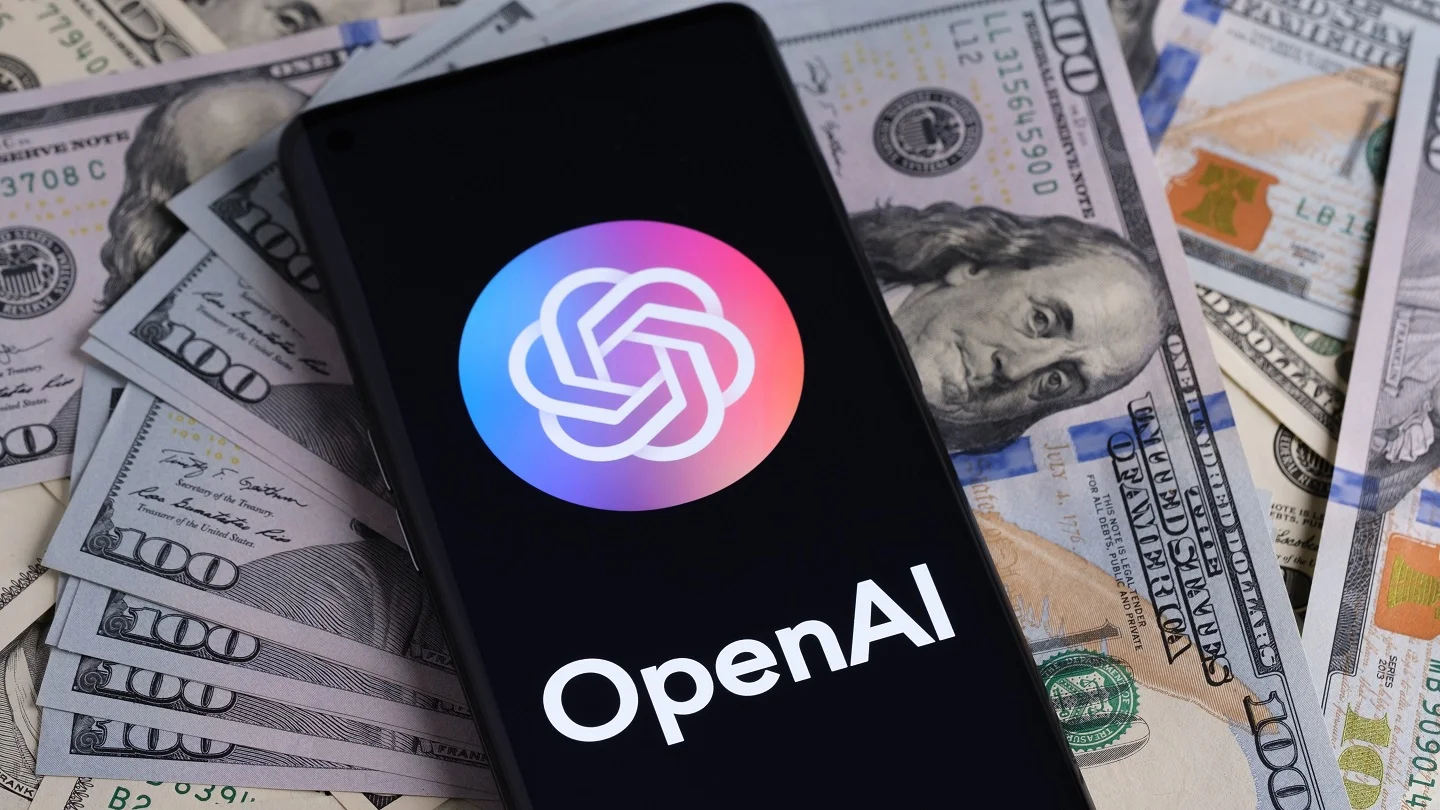OpenAI Engages in New Funding Discussions: Potential Market Impact Ahead

OpenAI Engages in New Funding Discussions: Potential Market Impact Ahead
In today’s rapidly evolving technological landscape, OpenAI has emerged as a pioneering force in the realm of artificial intelligence research. Known for transforming industries with its groundbreaking OpenAI language models, especially the renowned OpenAI GPT-3, the organization proves to be a cornerstone in modern AI development. With a wide array of OpenAI applications, from sophisticated OpenAI Chatbot solutions to powerful OpenAI API applications, the impact is undeniably expansive. However, as OpenAI embarks on new funding discussions, questions loom regarding potential market implications. What is OpenAI poised to achieve with fresh capital, and how are its initiatives shifting economic landscapes? In this blog post, we delve into how OpenAI research continues to reshape technological capabilities and explore how OpenAI works in the pursuit of future opportunities and challenges.
OpenAI Engages in New Funding Discussions: Potential Market Impact Ahead Understanding OpenAI: From Research to Real-World Applications
OpenAI has carved a significant niche in the domain of artificial intelligence research, creating cutting-edge technology with far-reaching applications. At its core, OpenAI strives to advance digital intelligence in a way that benefits humanity, a mission achieved through relentless innovation and collaboration. Beginning with fundamental explorations in AI, OpenAI emphasizes transparency and safety, striving to share its research outcomes with the global community. This helps broaden understanding and promotes advancements across industries.
Research Focus
- Safety and Ethics: Developing systems that align with human values ensures that AI technology progresses responsibly.
- Robustness and Scalability: Ensuring AI systems perform reliably and handle vast, real-world data scales.
OpenAI’s distinctive approach involves transitioning groundbreaking OpenAI Research projects into practical applications. A prime example involves the development and deployment of the renowned OpenAI GPT-3 model. By leveraging the power of extensive language models, OpenAI applications have revolutionized how industries utilize AI.
Real-World Applications
| Application Area | Description |
|---|---|
| Education | AI-powered tutors offer personalized learning experiences. |
| Healthcare | AI helps in diagnostics and personalized medical treatment recommendations. |
| Business | OpenAI Chatbot solutions streamline customer interactions, enhancing user experience and efficiency. |
Furthermore, through tools such as the OpenAI API applications, users across sectors, from developers to tech giants, harness the transformative potential of AI for diverse purposes. As their Research progresses, OpenAI endeavors to bridge the gap between theoretical AI constructs and practical, accessible solutions, paving the way for a future where AI is an integral component of every industry.
OpenAI Engages in New Funding Discussions: Potential Market Impact Ahead The Evolution of OpenAI’s Language Models: A Focus on GPT-3
The trajectory of OpenAI’s language models has been nothing short of groundbreaking, with each iteration pushing the boundaries of what artificial intelligence can achieve. At the core of this evolution is OpenAI GPT-3, a powerful language model that has captured the imagination of developers, researchers, and businesses alike.
OpenAI GPT-3 stands out due to its unprecedented capability in understanding and generating human-like text. It represents a significant leap from its predecessors, making it a pivotal player in advancing artificial intelligence research. Leveraging a deep neural network architecture, GPT-3 processes conversions with exceptional fluency and coherence. It is trained on diverse internet text and can perform a multitude of tasks such as language translation, content creation, and even programming assistance.
Key Features of GPT-3:
- Scalability: It has 175 billion parameters, allowing it to handle a wide variety of complex queries with ease.
- Adaptability: The model can be fine-tuned for specific tasks, making it versatile for different industry needs.
- Efficiency: Despite its size, GPT-3 is optimized for delivering fast and accurate responses, enhancing user experience.
| Features | Description |
|---|---|
| Scalability | 175 billion parameters |
| Adaptability | Can be customized for specific tasks |
| Efficiency | Quick and precise output |
Transitioning from OpenAI GPT-2 to GPT-3 illustrates a leap in scale and capability, showcasing the pinnacle of OpenAI research in natural language processing. Businesses are now innovatively deploying the OpenAI Chatbot built on GPT-3, revolutionizing customer interaction dynamics. Furthermore, developers utilize OpenAI API applications to craft cutting-edge solutions, spanning various sectors, from healthcare to finance.
The evolution of OpenAI language models continues to inspire technological advancements, positioning GPT-3 as a cornerstone of OpenAI’s applications in the real world.

Exploring OpenAI’s Range of Applications: Chatbots and Beyond
OpenAI has made significant strides in the world of artificial intelligence, particularly through the development of robust language models that power a versatile range of applications. Among these, the OpenAI Chatbot, supported by OpenAI GPT-3, has become an indispensable tool across various sectors for its ability to understand and generate human-like text. But the potential of OpenAI extends far beyond mere chatbots.
Chatbots: A Revolution in Customer Engagement
- Natural Language Processing (NLP): The OpenAI Chatbot employs sophisticated NLP capabilities, allowing businesses to enhance customer engagement by providing real-time, personalized interactions.
- 24/7 Availability: Unlike human agents, chatbots can operate around the clock, ensuring customer inquiries are addressed instantly.
- Cost Efficiency: With automation, companies can reduce overheads associated with customer service staffing.
OpenAI Engages in New Funding Discussions: Potential Market Impact Ahead Beyond Chatbots: Diverse OpenAI Applications
**OpenAI’s capabilities are not limited to traditional chatbot functionalities. The scope of OpenAI applications is vast and continually expanding:
- Content Creation: With tools like OpenAI GPT-3, automated content creation for marketing and media has become more efficient and accurate.
- Data Analysis: By utilizing OpenAI API applications, organizations can leverage AI for complex data analysis, uncovering insights that drive strategic decision-making.
- Healthcare Innovation: In the healthcare sector, OpenAI language models assist in diagnosing medical conditions, predicting patient outcomes, and personalizing treatment plans.
Embracing the Future with OpenAI
The advancements in artificial intelligence research by OpenAI are not just technological milestones but transformative shifts for industries worldwide. By integrating OpenAI technologies into operations, businesses are finding new ways to innovate and remain competitive in an ever-evolving market landscape. As research continues to develop, the horizon for OpenAI applications expands, promising a future of possibilities that extend well beyond current imaginations.
How OpenAI’s API is Transforming Industries
The OpenAI API applications are revolutionizing various sectors by offering powerful solutions for automating tasks, enhancing efficiency, and creating innovative experiences. At the core of this transformation is the OpenAI GPT-3 technology, renowned for its ability to comprehend and generate human-like text, thus enabling companies to explore new possibilities. Here’s how this OpenAI API is making waves across different industries:
- Customer Service: The OpenAI Chatbot is taking customer service to new heights. Businesses can implement this technology to handle customer queries, manage requests, and provide 24/7 assistance, ultimately leading to improved customer satisfaction and reduced operational costs.
- Content Creation: Content marketers are leveraging the API to generate diverse written materials, from blog posts to ad copy, ensuring a steady flow of creative and engaging content without over-reliance on human writers.
- Data Analysis: In the realm of data analysis, OpenAI API applications facilitate advanced data interpretation and prediction, enabling companies to make better-informed business decisions and tap into new market opportunities.
- Education: EdTech firms are incorporating the OpenAI language models to develop interactive educational tools, providing personalized learning experiences tailored to individual student needs.
| Industry | Transformation Enabled by OpenAI’s API |
|---|---|
| Customer Service | Enhanced service with automated, responsive chatbots |
| Content Creation | Streamlined creation of diverse, high-quality content |
| Data Analysis | Sophisticated data insights and more accurate predictive analytics |
| Education | Personalized learning environments with adaptive educational tools |
By incorporating these cutting-edge technologies, businesses are redefining traditional processes and creating value in unprecedented ways. This wave of transformation reflects the significant impact of OpenAI Research and highlights the potential growth OpenAI’s continuous innovation can offer. As more sectors begin to harness the power of these tools, the true potential of artificial intelligence research unfolds, pointing towards a future full of possibilities.
OpenAI Engages in New Funding Discussions: Potential Market Impact Ahead Artificial Intelligence Research at OpenAI: Key Insights
OpenAI has long been at the forefront of artificial intelligence research, consistently pushing the boundaries of what’s possible in the realm of machine learning and neural networks. A key area of focus for OpenAI Research is the development and refinement of its powerful language models, particularly the renowned OpenAI GPT-3. Below are some pivotal insights regarding their research advancements:
- Language Models Optimization: With OpenAI GPT-3, the focus has been on creating models that are not only highly efficient but also adept at understanding and generating human-like text. This includes fine-tuning the models to enhance their decision-making processes and ensure more accurate output.
- Scalability and Efficiency: OpenAI Research strives to improve the scalability of AI models, making them more efficient and usable across various platforms. This can involve refining the model algorithms, leading to faster and more reliable performance in real-world settings.
- Ethical AI Development: A significant aspect of OpenAI’s research is ensuring that the development of AI technologies aligns with ethical practices. This includes addressing concerns around bias, privacy, and security within artificial intelligence systems.
The insights gathered from OpenAI’s research are essential for understanding how AI can be leveraged across different industries and applications. Whether it’s through OpenAI Chatbot innovations or cutting-edge AI frameworks, these insights drive forward the vision of intelligent, adaptable, and responsible AI systems.
| Key Research Insights | Description |
|---|---|
| GPT-3 Focus | Enhancing human-like understanding and generation of text through powerful language models. |
| Efficiency Improvements | Prioritizing scalability and reliability to optimize performance across diverse platforms. |
| Ethical Considerations | Committing to the responsible development of AI, addressing bias, privacy, and ethical issues. |
In summary, the artificial intelligence research at OpenAI continues to redefine technological capabilities and societal impact while paving the way for future innovations in AI.
OpenAI’s New Funding Discussions: What We Know So Far
In recent weeks, OpenAI’s new funding discussions have garnered considerable attention from tech enthusiasts and investors alike. The organization, known for its groundbreaking work in artificial intelligence research, is reportedly in talks to secure additional funding. This move could significantly impact the AI sector and influence industry trends.
Current Status and Speculations
- Investment Goals: While specific figures remain undisclosed, reports suggest that OpenAI aims to raise substantial capital. This funding could be crucial for enhancing their capabilities, particularly in OpenAI language models like GPT-3.
- Investor Engagement: Conversations with top-tier venture capitalists and international tech firms underline OpenAI’s appeal within the industry. Such engagement signifies confidence in the organization’s future potential and growth trajectory.
- Funding Purpose: The primary target areas for this capital influx might include expanding OpenAI applications and advancing research in AI safety and ethics.
Market Reactions
- Technology Advancements: As OpenAI progresses in securing funds, a boost in the development of new technologies and improvements in existing models can be anticipated. This aligns with increasing demand for OpenAI API applications across various sectors.
- Competitive Landscape: The potential influx of capital could position OpenAI more robustly against competitors, setting new benchmarks in AI solutions.
Implications for OpenAI’s Future
This development hints at a strategic push to broaden OpenAI’s market reach and solidify its leadership in AI innovation. Successful funding rounds will not only fuel existing projects but potentially pioneer new offerings in OpenAI Chatbot technologies, democratizing AI for widespread use.
Overall, these discussions underscore a pivotal moment for OpenAI with far-reaching consequences for its position in the tech universe. As investors eagerly await the outcomes, the industry watches closely, speculating on the transformative impact that new funding could unleash.
OpenAI Engages in New Funding Discussions: Potential Market Impact Ahead Potential Market Implications of OpenAI’s Funding Initiatives
The recent buzz around OpenAI’s new funding discussions has piqued the interest of entrepreneurs, investors, and tech enthusiasts. The funding initiatives signify an exciting phase for the organization as they could lead to significant shifts in the market dynamics of artificial intelligence. Here’s a closer look at the potential market implications:
- Increased Investment in AI Infrastructure: With fresh funding, OpenAI Research can accelerate advancements in AI infrastructure. Enhanced computational power and state-of-the-art facilities could boost the efficiency and capabilities of OpenAI language models, thereby opening new doors for innovative applications.
- Expansion of OpenAI API Applications: The additional resources from funding can enable the scaling of OpenAI API applications. This expansion supports a broader range of industries—from healthcare to finance—enhancing their efficiency and productivity through tailored AI solutions.
- Encouragement of Competitive Innovation: New funding can energize the AI sector, encouraging both startups and existing firms to innovate and keep pace with OpenAI’s advancements. This healthy competition can lead to breakthroughs in artificial intelligence research, offering innovative products and services to consumers.
- Job Creation and Skills Development: As OpenAI’s applications and API expand into varied sectors, there could be an upsurge in job opportunities. Additionally, an emphasis on AI skill development may arise as industries integrate OpenAI Chatbot and other solutions.
- Influence on AI Policy and Regulation: With significant investments, there might be increased attention on AI policymaking. OpenAI’s technology breakthroughs may influence regulatory frameworks, shaping how ethical AI is developed and deployed globally.
Overall, the market implications of OpenAI’s funding initiatives are promising, pointing towards growth, innovation, and a reshaping of industry standards. This influx of capital represents not just an investment in technology, but also an investment in the future of global industry ecosystems.
OpenAI Engages in New Funding Discussions: Potential Market Impact Ahead How Does OpenAI Work? A Deep Dive into Its Technology
OpenAI stands at the forefront of artificial intelligence research, leveraging cutting-edge technology to develop intelligent systems with remarkable capabilities. At the core of OpenAI’s innovations lies its sophisticated architecture which powers models like OpenAI GPT-3. To understand how OpenAI functions, it is essential to dissect the key components of its technology infrastructure:
- Data Acquisition and Processing: OpenAI deploys extensive data collection techniques, gathering diverse datasets from across the internet. This data is meticulously processed to train the language models effectively, ensuring they generate coherent and contextually relevant responses.
- Neural Network Architecture: OpenAI GPT-3, a flagship model, is built on a large-scale neural network architecture. It employs deep learning techniques to understand and generate human-like text, enabling the development of advanced tools like the OpenAI Chatbot.
- Supercomputing Resources: To handle the enormous computational demands, OpenAI utilizes advanced supercomputing resources. These capabilities are paramount in processing vast amounts of data and executing complex calculations necessary for model training.
Below is a table summarizing the operational elements of OpenAI technology:
| Component | Description |
|---|---|
| Data Acquisition | Collecting diverse datasets for comprehensive training |
| Neural Networks | Utilizes deep learning techniques for text understanding and generation |
| Supercomputing | Provides necessary computational power for processing and training |
In addition, OpenAI API applications signify how OpenAI delivers its technological innovations to various industries, offering tools that enhance productivity and creativity. The seamless integration of these components illustrates a sophisticated framework that defines how OpenAI works.
This deep dive into OpenAI’s technology highlights not only the intrinsic mechanisms at play but also the significant potential for widespread application across different sectors. The fusion of data-driven insights and operational excellence underscores OpenAI as a pivotal entity in shaping the future of AI-driven solutions.
Evaluating the Future of OpenAI: Opportunities and Challenges in AI
The future of OpenAI presents a fascinating intersection of technological advancements and complex challenges. As the organization advances in its mission to ensure that artificial general intelligence (AGI) benefits all of humanity, several opportunities and challenges come into focus.
OpenAI Engages in New Funding Discussions: Potential Market Impact Ahead Opportunities in AI Advancement
- Innovative Applications: With tools like the OpenAI API applications and OpenAI Chatbot technologies, there is vast potential to revolutionize industries ranging from healthcare to customer service. Enhancements in OpenAI GPT-3 have enabled more sophisticated and context-aware interactions, broadening the scope of OpenAI applications across various sectors.
- Data-Driven Insights: OpenAI’s ability to process and analyze vast quantities of data using its advanced OpenAI language models offers businesses unparalleled insights into consumer behavior and market trends. This can empower companies to make more informed decisions and optimize operations.
- Democratizing AI: OpenAI is committed to making AGI more widely accessible. By providing resources and platforms, they can foster an inclusive AI ecosystem where smaller enterprises and developers can participate in AI innovation.
OpenAI Engages in New Funding Discussions: Potential Market Impact Ahead Challenges Facing OpenAI
- Ethical Concerns: As the influence of AI grows, so do ethical dilemmas. OpenAI research must continuously address issues such as bias, transparency, and the potential for misuse of AI technologies.
- Regulatory Scrutiny: Governments worldwide are increasingly regulating AI technologies to protect consumers and safeguard privacy. This means OpenAI must navigate a complex landscape of evolving policies and international standards.
- Sustaining Competitive Edge: While OpenAI continues to lead in artificial intelligence research, competition is fierce. Remaining at the forefront of innovation requires constant investment in research and development.
Ultimately, as OpenAI ventures deeper into funding initiatives and technological advancements, the potential to transform multiple industries is significant. However, balancing innovation with ethical responsibility will be key to navigating the journey ahead. By embracing collaboration and transparency, OpenAI has the opportunity to shape a future where AI is a force for good.



